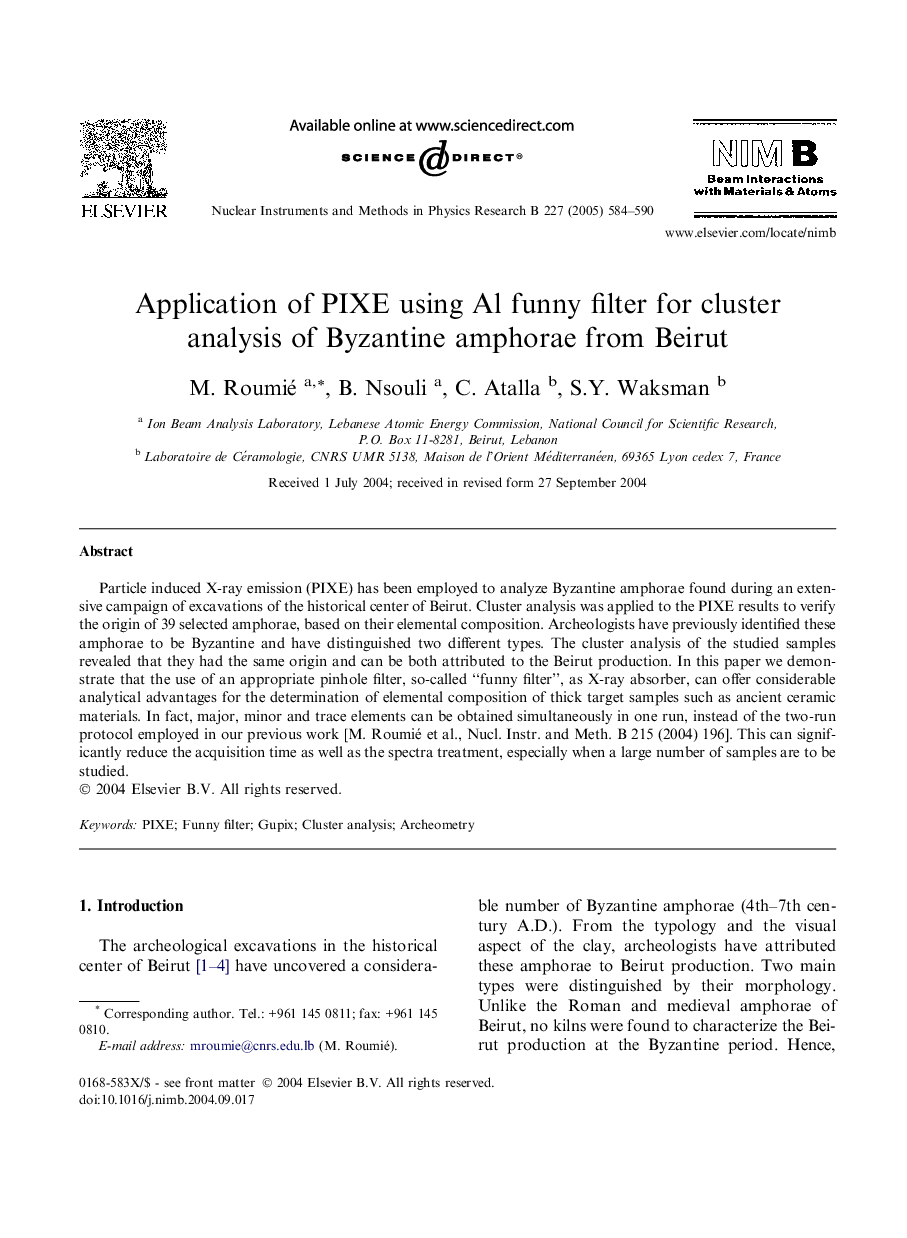| Article ID | Journal | Published Year | Pages | File Type |
|---|---|---|---|---|
| 10675441 | Nuclear Instruments and Methods in Physics Research Section B: Beam Interactions with Materials and Atoms | 2005 | 7 Pages |
Abstract
Particle induced X-ray emission (PIXE) has been employed to analyze Byzantine amphorae found during an extensive campaign of excavations of the historical center of Beirut. Cluster analysis was applied to the PIXE results to verify the origin of 39 selected amphorae, based on their elemental composition. Archeologists have previously identified these amphorae to be Byzantine and have distinguished two different types. The cluster analysis of the studied samples revealed that they had the same origin and can be both attributed to the Beirut production. In this paper we demonstrate that the use of an appropriate pinhole filter, so-called “funny filter”, as X-ray absorber, can offer considerable analytical advantages for the determination of elemental composition of thick target samples such as ancient ceramic materials. In fact, major, minor and trace elements can be obtained simultaneously in one run, instead of the two-run protocol employed in our previous work [M. Roumié et al., Nucl. Instr. and Meth. B 215 (2004) 196]. This can significantly reduce the acquisition time as well as the spectra treatment, especially when a large number of samples are to be studied.
Keywords
Related Topics
Physical Sciences and Engineering
Materials Science
Surfaces, Coatings and Films
Authors
M. Roumié, B. Nsouli, C. Atalla, S.Y. Waksman,
